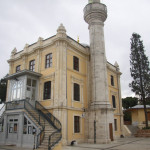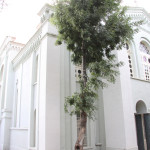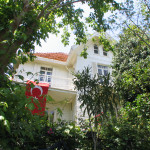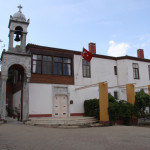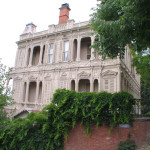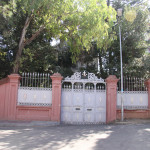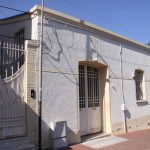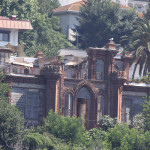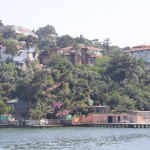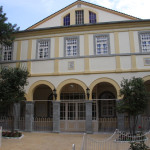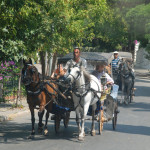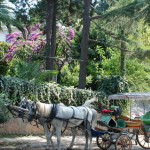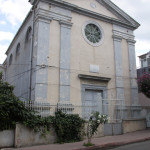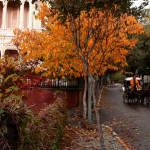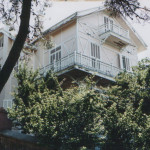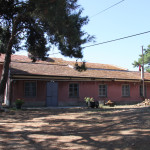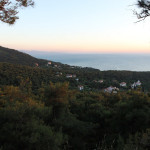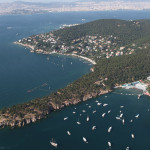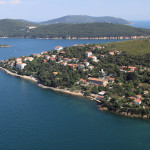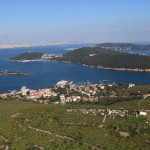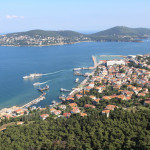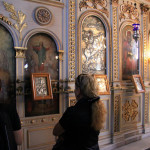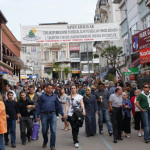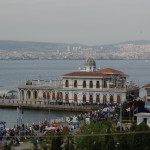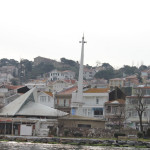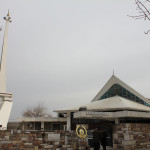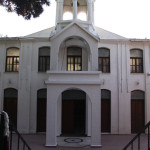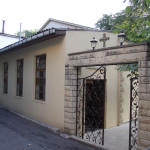The Princes’ Islands are a chain of four large and five rather small islands in the Sea of Marmara.
Originally used as places of exile during the Byzantine and Ottoman periods, İstanbul’s non-Muslim populations began to build summer residences on them after regular transportation from the mainland was introduced in 1846. As ferry service increased in frequency, some people opted to establish more permanent dwellings.
During the summer months, the Princes’ Islands are a popular destination for daily trips from the city of Istanbul. There is no traffic on the islands. Transportation is limited to phaetons (horse and buggy) and bicycles.
The islands are famous for their beautiful wooden houses with gardens, beaches and calm lifestyle.
The islands, which are known as either the Princes’ or Scarlet Islands, can be classified into three groups. Those open to tourism and residential use, privately owned islands and uninhabited islands. Kınalıada, Burgazada, Heybeliada, Büyükada and Sedef Adası are islands which are open to tourism and residential use. Kaşıkadası is private property and therefore there is no significant settlement on the island. Yassıada, Sivriada and Tavşanadası are uninhabited.
Büyükada
The largest of the islands, Büyükada is the first address of those who want to have a short break from the crowds and urban bustle of Istanbul. At a distance of 14 sea miles from the Port of Istanbul, Büyükada is also the furthest inhabited island from the city.
Phaeton carriages are perhaps the most distinguishing feature of this island and touring the island in these horse-drawn carriages drawn is a must for most visitors.
The hill of Aya Yorgi is without a doubt the most popular destination on the island. The final ascent on foot to the summit is well worth the 20 minutes it takes. A stunning view of the city of Istanbul and the Marmara coast line rewards the climbers. The Monastery of Aya Yorgi, situated on the summit, is considered sacred by Orthodox Christians. According to religious belief, those who visit this monastery earn the status of “half-pilgrim”. For this reason, Aya Yorgi is visited by thousands of Turkish and foreign tourists, particularly in the summer.
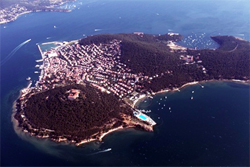
Heybeliada
The second largest island, Heybeliada, was a favorite summer resort as far back as Byzantine and Ottoman periods. Heybeliada is famous for its many monasteries, and graves of patriarchs and Metropolitans. Heybeliada has had many names throughout history, but the most common was “Halkis” (Halki, Khalkilis). Most of the historical buildings to survive the centuries on Heybeliada are used as residences today. There are also religious historical buildings such as churches, monasteries, sacred Greek springs, Christian schools, and examples of windmills, Byzantine watch-towers, a Byzantine shipyard, cisterns and aqueducts. The large Naval Cadet School overlooks the jetty to the left as you get off the ferry. There are two important historical features on the grounds of the school. One is Kamariotissa, the only remaining Byzantine church on the island, and more significantly, the last church to be built before the conquest of Constantinople. The other is the grave of Edward Barton, the second English Ambassador to be sent to Constantinople by Elizabeth I of England, who chose to live on Heybeli to escape the bustle of the city.
The population of the island is around 3,000 in the winter. In the summer, the population swells to 10,000 people. The main attractions during the summer are small-scale open-air concerts sponsored by the local council, a swimming and fitness club next to the sea, and an annual Independence Day march, which culminates in a resident naval band touring the island. Vehicular transportation is generally provided by traditional horse-drawn phaetons and the roads here were designed for walking and cycling.
Kınalıada
Kınalıada is an island of monasteries and it was a place of exile for emperors and empresses, including Romanos Diogenes, the Commander-in-Chief of the Byzantine armies. Romanos Diogenes suffered defeat in the battle against the Seljuks at Malazgirt in 1071 and was taken as prisoner by Sultan Alpaslan. On his return to the city, his fortunes turned, he was punished and sent to die in the monastery he had built on Kınalıada. His grave is in the Greek church. Like the other islands, Kınalıada has also had a number of names throughout history; the most common was “Proti”. Kınalıada has few green areas but plentiful beaches. It is possible to swim near the ferry docks. Unlike other large islands there are no phaetons here and so one gets around by walking, cycling or by sea.
Burgazadası
Burgazadası is the third largest of the Islands, a single hill 2 km across. Demetrius I of Macedon, one of the Diadochi (Successors) of Alexander the Great, built a fort here and named it after his father Antigonus I Monophthalmus. The island originally took this name, but today it is generally known by the Turks as simply “Burgaz” (Turkish for “fort”). In 2003, Burgaz suffered a devastating forest fire, losing 4 square kilometers of woodland.
Burgaz is a common setting and even a major theme for writer Sait Faik Abasıyanık, where he also resided. Today, his residence is kept as a museum. His bronze statue sits at his favourite restaurant in Kalpazankaya (the Counterfeiter’s Rock) enjoying the view with a glass of rakı, refilled daily by the restaurant’s owners.
Sedefadası
Sedefadası, “Mother-of-Pearl Island” in Turkish, is the smallest of the inhabited islands. Historically the island was beautifully decorated with garlands of flowers which, viewed from a distance, gave it a shimmering, colourful effect like the luster of mother of pearl, and was called “Sedefadası” as such.
Yassıada
Yassıada was used by the Byzantines for sending prominent figures into exile. One such person was the Armenian Patriarch (Catholicos) Narses who was first sent to this island before being imprisoned at Büyükada in the 4th century AD. In the 11th century AD the Byzantines used the island for political prisoners. The remains of the 4 underground prison cells from this period can still be seen. The Byzantines also built a monastery and church on the island. Yassıada was captured by the Latin Crusaders during the Fourth Crusade in 1204. In 1857 the island was purchased by the British ambassador Henry Bulwer, brother of novelist Edward Bulwer-Lytton, who built himself a mansion and a small castle-like structure to live undisturbed on this distant island. The tiny castle and the wharf in front of it are still standing today. Henry Bulwer also organized agricultural production on the island to self-sustain his little realm at least to a certain degree, but later sold Yassıada to the Khedive of Ottoman Egypt & Sudan, Ismail Pasha, who, however, didn’t construct any new buildings and completely neglected the island. With the establishment of the Republic of Turkey in 1923 the island became the property of the Turkish state, and in 1947 Yassıada was handed over to the Turkish Navy which built several school buildings.
Sivriada
Sivriada currently is deserted. The island was often used by the Byzantine clerics as a distant place for peaceful worship, and by the Byzantine emperors as a convenient prison to detain prominent people whom they deemed troublesome. The first famous person to be imprisoned on the island by the order of emperor Nikephoros was Platon, the uncle of renowned cleric Theodoros Stoudites, for publishing books of pagan antiquity. Other famous people who stayed on the island for religious and political reasons were Gebon, Basileios Skleros, Nikephoritzes (the close servant of Michael VII Ducas), Patriarch John of Constantinople and Patriarch Michael II of Constantinople. The graves of those who died on the island during the Byzantine period can still be seen today. The ruins of a Roman settlement and a 9th century Byzantine monastery can still be seen on the shore, close to the fishermen’s shelter, a small wharf which is often used by yachts. The most important buildings on the island were built in the 9th century AD, including a church, a chapel dedicated to religious martyrs, a monastery on the eastern end (with its walls still seen today) and a cistern in the center of the island (a part of which can still be seen.) In 1911 the governor of Istanbul ordered the stray dogs in the streets to be gathered and deposited to Sivriada, but a severe earthquake which immediately followed the event was perceived as “a punishment by God for abandoning the dogs” and they were transported back to the city.
Kaşıkadası
Kaşıkadası is located to the east of Burgazadası. The island looks like a spoon which has given the island its name. The old name of the island was “Pita” Island.
Tavşanadası
Tavşanadası (Rabbit Island) can be seen from Büyükada. Of all the islands, it is the farthest from İstanbul.
- Cemevi – Burgazada
- Hamidiye Mosque- Büyükada
- Hamidiye Mosque- Büyükada
- Orthodox Church-Burgazada
- Dimitri Church













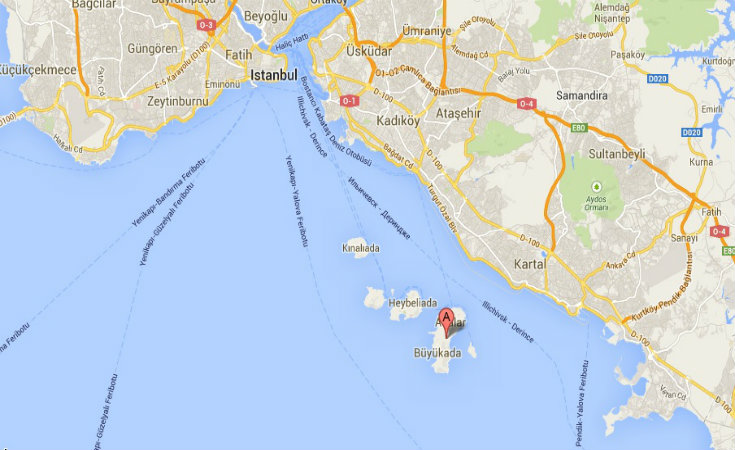

![adalar resimleri {mimozalar] 159 (800x600)](http://howtoistanbul.com/wp-content/uploads/2013/09/adalar-resimleri-mimozalar-159-800x600-150x150.jpg)
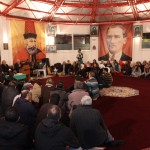
![adalar resimleri {mimozalar] 029 (800x600)](http://howtoistanbul.com/wp-content/uploads/2013/09/adalar-resimleri-mimozalar-029-800x600-150x150.jpg)
![adalar resimleri {mimozalar] 042 (800x600)](http://howtoistanbul.com/wp-content/uploads/2013/09/adalar-resimleri-mimozalar-042-800x600-150x150.jpg)

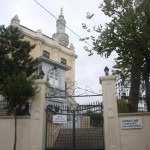

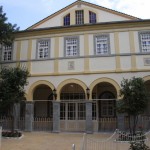
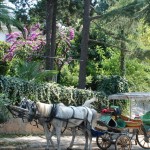
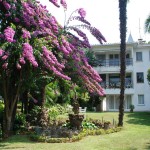
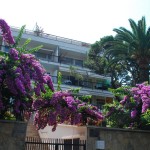
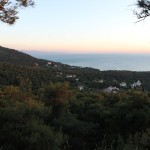
![adalar resimleri {mimozalar] 159](http://howtoistanbul.com/wp-content/uploads/2013/09/adalar-resimleri-mimozalar-159-150x150.jpg)
